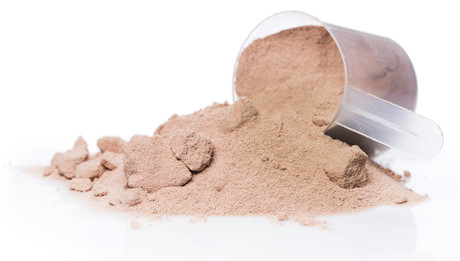Caking considerations: solving caking problems

The primary causes of caking, the mechanisms involved and industry-proven methods to quantify caking were explored in Part 1 of this article. Now we look at solving caking problems.
Tackling a caking problem entails the following steps:
- A hypothesis based on possible mechanisms behind caking is developed.
- Potential process control variables or product specifications are identified.
- Investigations are conducted in which control variables or product specifications are adjusted and samples of material are collected.
- The samples are tested to quantify caking.
Preliminary tests to characterise the material can be performed to help select process control variables or product specifications to be investigated. These tests include moisture sorption, surface energy, differential scanning calorimetry and particle size. For example, if a product is known to be hygroscopic, a program to determine the effect of moisture content or relative humidity should be performed. If a package of material is expected to be stored for an extended time in a warehouse with no temperature controls, an investigation in which materials are stored over a range of temperatures should be conducted.
Having a test method that allows quantitative rather than qualitative comparisons of test results in a relatively short period of time makes attacking material caking problems much less intimidating. A simplified analysis or more advanced statistical methods, such as experimental design processes, can be adopted and used as appropriate. Because shear cell tests simulate conditions for which a material will be exposed during storage, investigators can be confident in the results.
By understanding the mechanisms behind caking, identifying key process control variables and product specifications, and initiating a program where the gain in cohesive strength of a material over time can be predicted by obtaining small samples, caking problems can be successfully remedied.
Once the caking mechanism(s) and causes are quantified, solutions can be sought which can include:
- Modifying the process (process control variables), such as changing the operating conditions or the equipment.
- Modifying the material (product specifications), such as introducing a conditioning step (eg, granulation, drying or pre-blending), changing the particle size, addressing the attrition or impurity effects, or introducing flow aid additives (eg, hydrophobic anti-caking agents).
- Modifying the packaging (again process control variables), such as changing storage conditions and container size, or introducing dehydrating satchels or desiccants.
Case study
A manufacturer of an organic acid was experiencing a caking problem. The powder was manufactured in the presence of an organic solvent, which at sufficient levels would plasticise the solids, causing them to soften.
Tests were performed on the standard product, one that had been washed with water to remove residual solvent and one in which 0.5 % fumed silica was added. The results are shown below.

In this case study, the investigation showed that the manufacturer had two options available to solve its caking problem: installation of a washing process downstream of its dryer or adding fumed silica during the drying step.
**************************************************
Jenike & Johanson
Whether you are feeding sticky food ingredients into a mixer, withdrawing powders from a storage silo to a weigh bin, or performing high-speed packaging of a dry powder beverage or baked goods, Jenike & Johanson can help you achieve reliable material flow and maintain food quality. Having been in business since the 1950s, the company has developed proven and practical ways to design powder and bulk solids storage, feeding and conveying equipment to promote reliable, uniform and unrestricted bulk material flow.
In the food industry Jenike & Johanson has extensive experience in:
- on-site review of powder flow and handling problems such as plugging, erratic flow, caking, agglomeration, segregation, etc;
- food powder characterisation using flow properties testing;
- silo and feeder design for finished goods, ingredients;
- pneumatic conveying testing of food powders;
- process and design modifications to meet safety, production and quality requirements;
- mixing/blending testing to evaluate equipment;
- research and development to continuously improve performance.
The US-based company has local experts in Perth, Western Australia, who are happy to help Australian and New Zealand companies solve their caking and bulk flow problems.
Irish drinks manufacturer takes its supply chain to the next level
A stainless steel vertical conveyor system has been incorporated into the final packaging process...
Voice technology used to transform cold storage operations
Dematic has implemented its Voice solution with gamified workflow features at two Australian...
Rock lobster exporter improves supply chain efficiency
Transport technology provider Microlise partners with rock lobster exporter in Western Australia...











